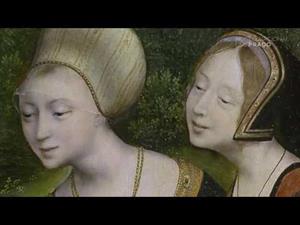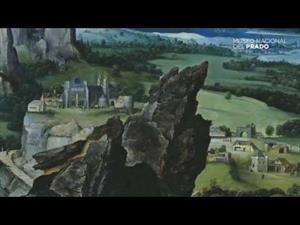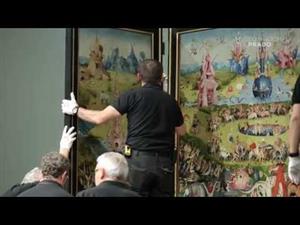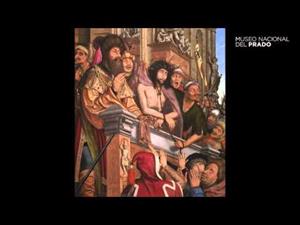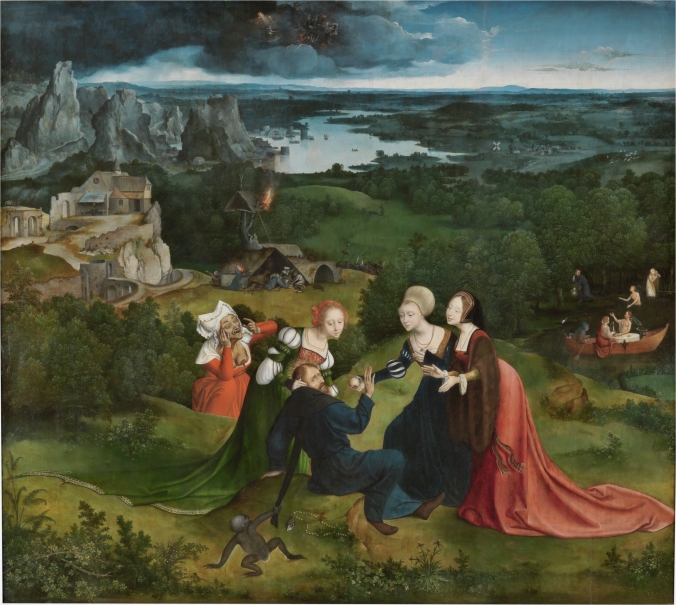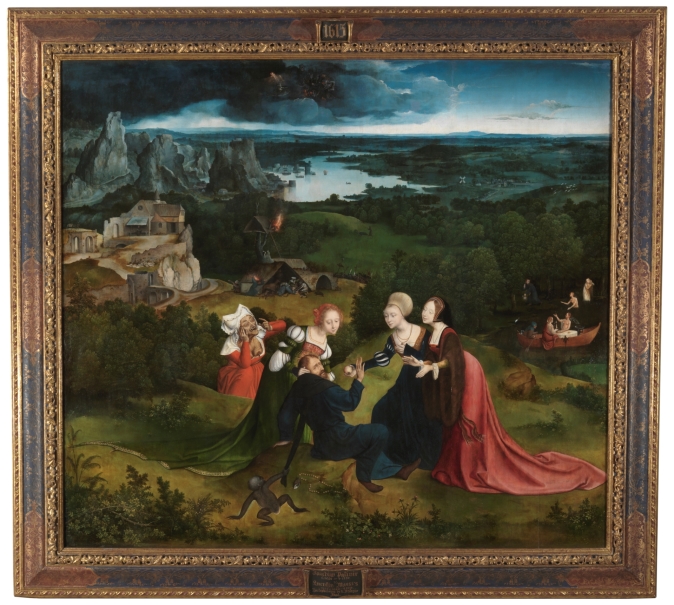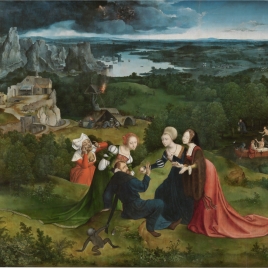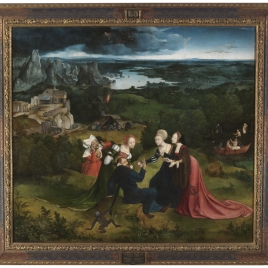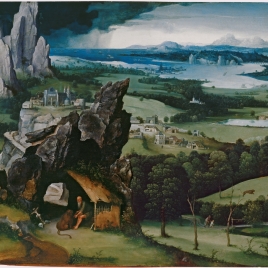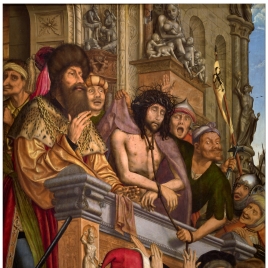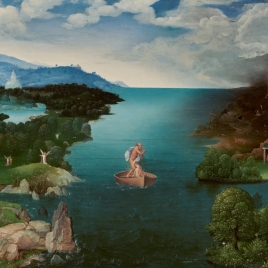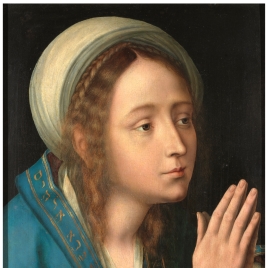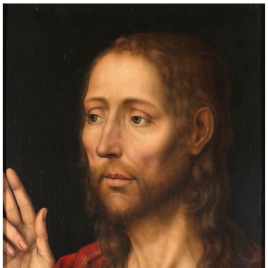The Temptations of Saint Anthony
1520 - 1524. Oil on panel.Room 055A
The format and the dimensions of this picture and the high horizon line allow for rendition of a large landscape, which displays what are generally regarded as the defining characteristics of Patinir`s style. Like the Rest on the Flight into Egypt (P1611), the foreground figures are shown on top of a hill in a scale suited to the proportions of the panel. On the much lower level of the middle ground, the demons are shown attacking St Anthony. They even appear in the sky, among the menacing clouds which darken the left-hand side of the panel. In the background, far from the lands where the saint lives, earthly activities take place. Evoking his native region around the River Meuse, Patinir places a large river in the centre with bare grey rocks on its left bank, their imposing mass outlined against the darkening sky while the fortified city lies at their foot. This work is a collaboration between Patinir and Massys, who painted the figures in the foreground, although it is only signed by Patinir close to the lower right corner.
When Patinir and Massys painted the Prado`s Temptations of Saint Anthony the Abbot, they must have been influenced by Bosch`s interpretation of the theme, especially as seen in the Lisbon triptych, since the painter from`s Hertogenbosch gave free rein to his imagination in matter of demons in both the Temptation and the Inferno. Such was the impact of his devilish creatures that many sixteenth-century painters borrowed some of them, transforming them to a greater or lesser degree, as Patinir does in this painting, particularly in the attack of the demons in the air, but also in the assault on the cabin. Nevertheless, despite the undeniable debt of the Temptation of St Anthony to the works of Bosch, such borrowings are few and far between in the composition as a whole, and even of little importance for the final effect of the painting, dominated as it is by Patinir`s landscape and Quentin Massys`s foreground figures.
The temptation of St Anthony by three richly dressed young women who try to lure him from the path of virtue, as in this Prado panel, by inciting him to lust in the presence of the old procuress, does not appear in any of his hagiographies, unlike other passages from his life which also appear in the picture. In what is on this occasion a totally original format, carnal temptation is represented in a general way. The apple offered to the saint by one of the young ladies, like a modern Eve, alludes to original sin, while the woman behind him who caresses his neck already betrays her devilish nature in the shape of the train of her robe, and the monkey, a symbol of the devil, pulls at St Anthony, identified as such by his nimbus, to make him fall to the ground, as his rosary and the shell tied to it already have. Rather different in nature is the scene on a smaller scale to the far left of the panel, which incorporates a passage from the Vitae Patrum or Vaderboeck in which the saint is tempted by the queen and three young women who are with her in a brook. Patinir shows the saint in a forest clearing, making a sign of exorcism with his hand while retreating from the water where he intended to fill his pitcher. There, four seminaked women have invited him to join them -two in the water, and another two seated on a boat (the queen is the one on the right) in front of a table laden with food and drink. On the boat, hidden from the saint`s view, are two animals in the style of Bosch, which prove that the young women are of a devilish nature. One, leaning on the outer edge, is a sort of winged lizard, while the other, inside the boat, is a toad with a bowl of food on its head. On a more distant plane, nearly in the centre of the panel, the attack of the demons takes place. As usual, Patinir does not show it as occurring at the tomb in which the saint lived. Instead, as in the El Escorial St Christopher, the saint`s dwelling is a hut with another cabin on a treetop reachable only by a ladder, as in Bosch`s St Christopher at the Boijmans Van Beuningen Museum in Rotterdam. The demons have set fire to the treetop cabin and to the hair of the saint, who is finally attacked by animals with monstrous shapes. Those who assault St Anthony, throwing him on the ground and biting him, are the forerunners of the army of demons, which is on its way to the hut and whose advance guard has already reached the rear. Besides the attack on land, Patinir also includes the demons` assault in the air, in the upper part of the picture, a scene even more reminiscent of Bosch than the previous one. Further into the background of the composition, the encounter between Christ and the saint, who is prostrate after the attacks, is shown on a very small scale. On the left, outside a chapel built on a rocky promontory, Patinir represents St Anthony seated on a bench with a book open in his hands. Although this is generally interpreted as an image of the saint`s meditations, it doubtless responds to an idea similar to that of Durer`s 1519 engraving of St Anthony, dating from a moment of profound religious crisis infl uenced by Luther`s reformation. Like the Nuremberg master, Patinir also shows in this image the dangers of the personal interpretation of the Bible, which thus becomes a new temptation for the Christian (Silva, P.: Patinir. Essays and critical catalogue, Museo Nacional del Prado, 2007, pp. 242-253).

